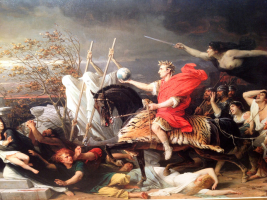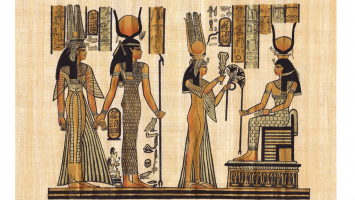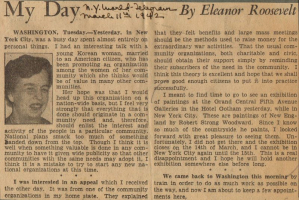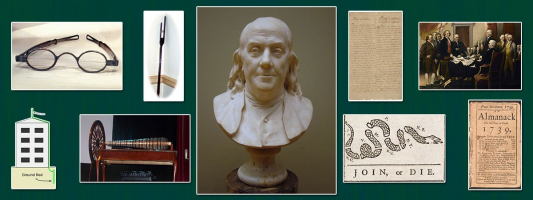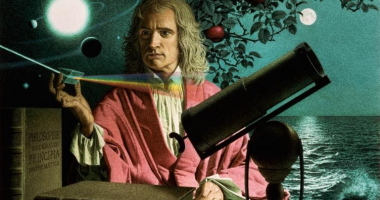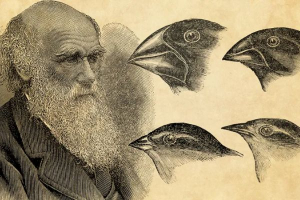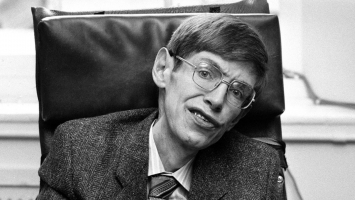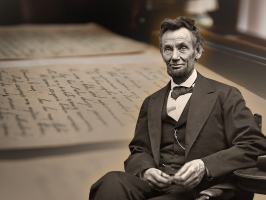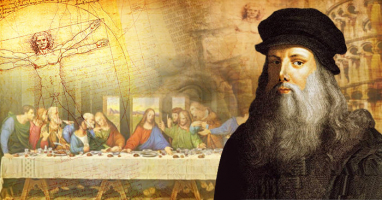Top 10 Major Accomplishments of Albert Einstein
Albert Einstein made a greater contribution to the evolution of our world than possibly any other man in history. His four Annus Mirabilis ("wonder year") ... read more...publications, published in 1905, laid the groundwork for modern physics and revolutionized how people thought about space, time, mass, and energy. Let’s discover the major accomplishments of Albert Einstein now!
-
Robert Brown used a microscope to view pollen grains in water in 1827 and discovered that they moved through the water, but he was unable to determine the mechanisms that generated this mobility. Albert Einstein released a paper in 1905 on Brownian motion, which is the random motion of particles in a fluid. Brown had noticed motion in the pollen, which Einstein stated was caused by individual water molecules moving the pollen. Though scientists had long theorized about atoms and molecules, Einstein's explanation of Brownian motion served as irrefutable proof that atoms and molecules indeed exist.
According to atomic theory, any liquid is made up of molecules (invisible in 1905). Furthermore, these molecules are always moving in a random, unending manner. The overall qualities of any liquid are determined by the average behavior of these molecules. However, Einstein knew that the random chaos of jostling, unseen molecules would cause statistical fluctuations - a small group of invisible molecules could move in largely the same direction for a brief period of time. Then, for a brief moment, another neighboring set of molecules could migrate primarily in a different direction.
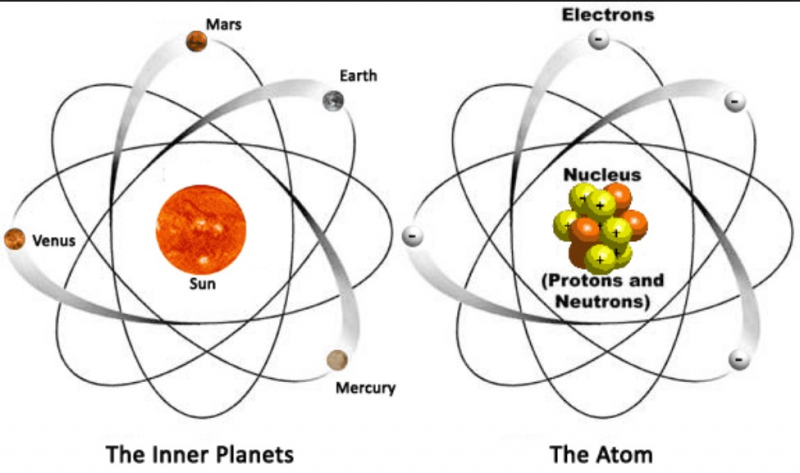
Source: FSU Chemistry 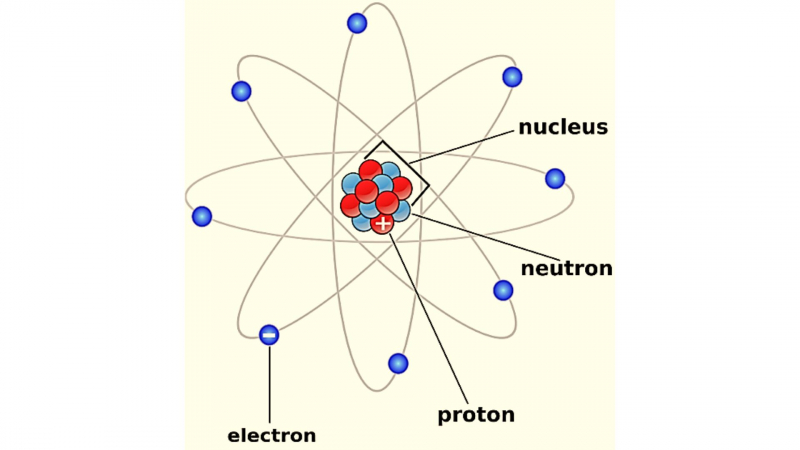
Source: Vedantu -
One of the major accomplishments of Albert Einstein is Avogadro’s number. When explaining Brownian motion, Einstein established the size of atoms and the number of atoms in a mole. He made it possible to determine Avogadro's number, and thus the size of molecules, experimentally. Experimentalists were able to count atoms by staring through an ordinary microscope because of Einstein's statistical account of atomic activity.
The statistical study of the Brownian motion of oil particles dispersed in water was used by Einstein's approach. In a microscope, he determined the average distance of the droplets due to their random Brownian motion. It is dependent on the atom size. If the atoms are smaller, the Brownian motion will be slower due to greater statistical leveling of the water molecules around the oil drops.
The influence of a single molecule striking a crumb that is many orders of magnitude larger may be insignificant. The aggregate displacement from numerous such strikes (so-called Brownian motion), according to Einstein, may reach a quantifiable distance. He computed the distance by treating the specks' motion as "random walks," jolting around through impulses that are unexpected in size and direction, but with an overall distribution he determined for his thesis.
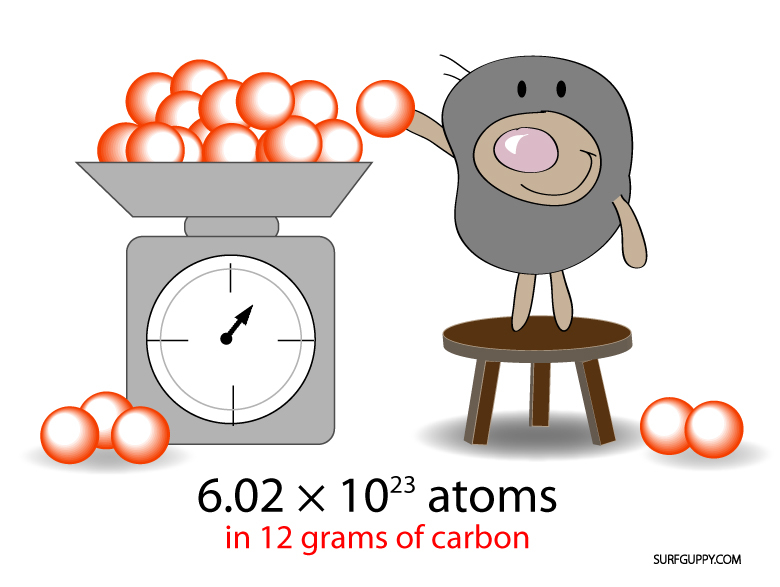
Source: Blendspace 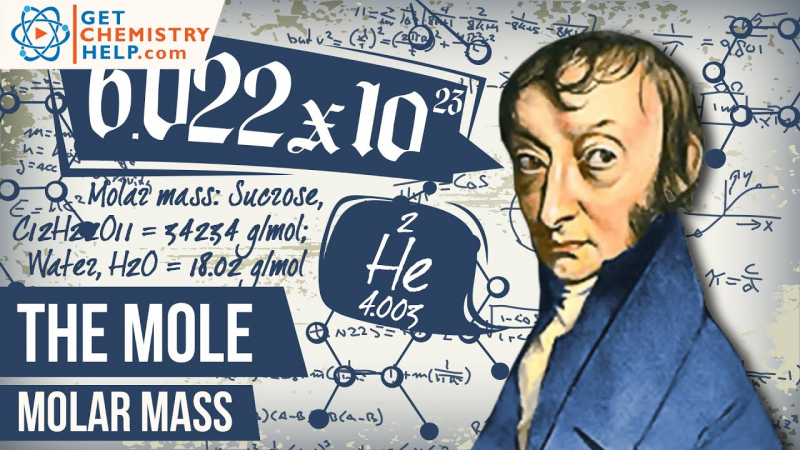
Source: GetChemistryHelp -
In March 1905, Einstein published a paper explaining the photoelectric effect while still working as a lowly patent clerk in Switzerland. Max Planck had addressed the problem of black body radiation five years before by demonstrating that each atom in the cavity's walls could only absorb or emit radiation in discrete "quanta," with each quantum's energy being an integer multiple of its frequency times a new fundamental constant.
Planck believed his concept of quanta was merely a mathematical "trick" for bringing theory and experiment closer together. Planck's quanta, on the other hand, were extended to light itself by Einstein. (Planck considered that just the atoms' vibrations were quantized.) According to Planck's formula, light is a beam of particles whose energies are related to their frequencies. The photons collide with the atoms when the beam is directed towards a metal. The photoelectric effect occurs when the frequency of a photon is high enough to knock an electron loose. Light carries energy proportionate to the wave's frequency as a particle, and has a frequency defined by the particle's energy as a wave. This work earned Einstein the Nobel Prize in Physics in 1921.
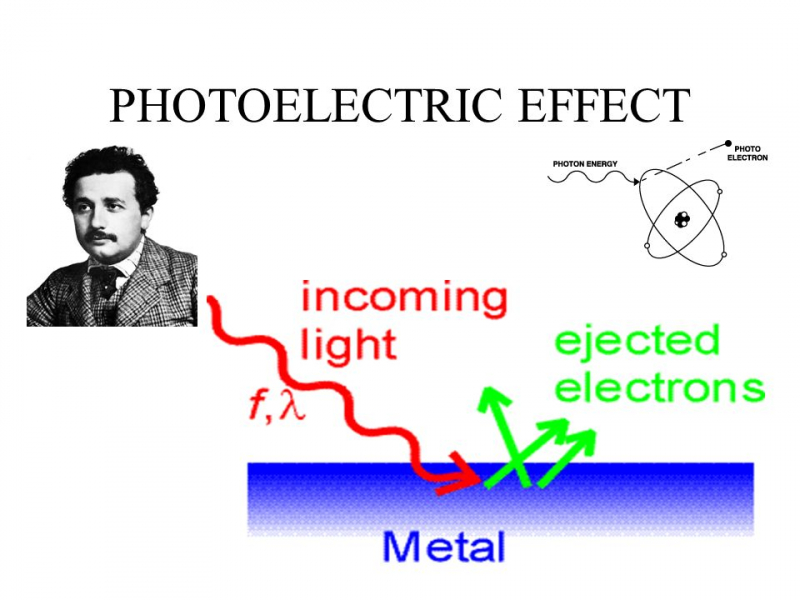
Source: SlidePlayer 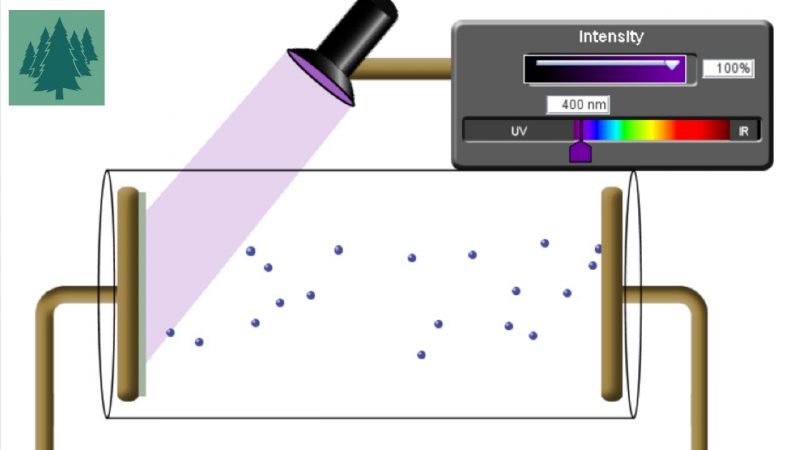
Source: Forest Learn -
Special relativity - one of the major accomplishments of Albert Einstein, is a theory that deals with "exceptional" situations, such as massive energies, ultra-high speeds, and galactic distances, all without the difficulties of gravity.
Because of the contradictions between Newtonian mechanics and Maxwell's electromagnetism equations, Einstein wrote his famous article 'On the Electrodynamics of Moving Bodies' on September 26, 1905. While dealing with circumstances near the speed of light, Einstein advocated major alterations to mechanics. Einstein's special theory of relativity was later named after him. It was backed up by experimental proof and quickly gained general acceptance. Special relativity is still the most accurate model of motion at any speed today.
According to Wired, Albert Einstein established that the laws of physics are the same for all non-accelerating observers in his theory of special relativity, and he demonstrated that the speed of light within a vacuum is the same regardless of the speed at which an observer moves. As a result, Einstein discovered that space and time were intertwined to form the space-time continuum. Moreover, events that happen at the same time for one observer may happen at different times for another.
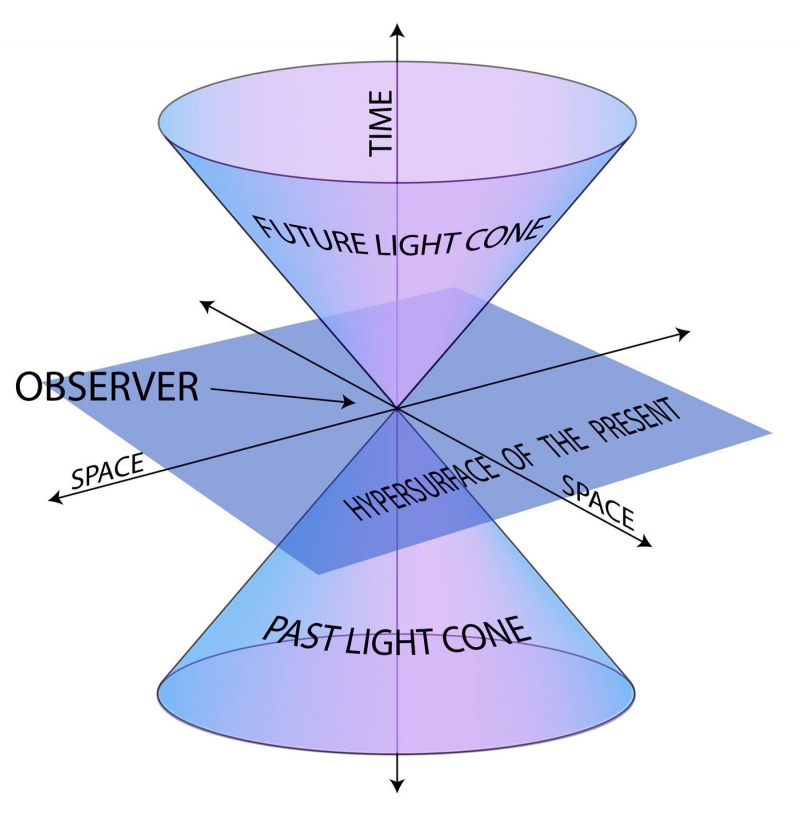
Source: byjus 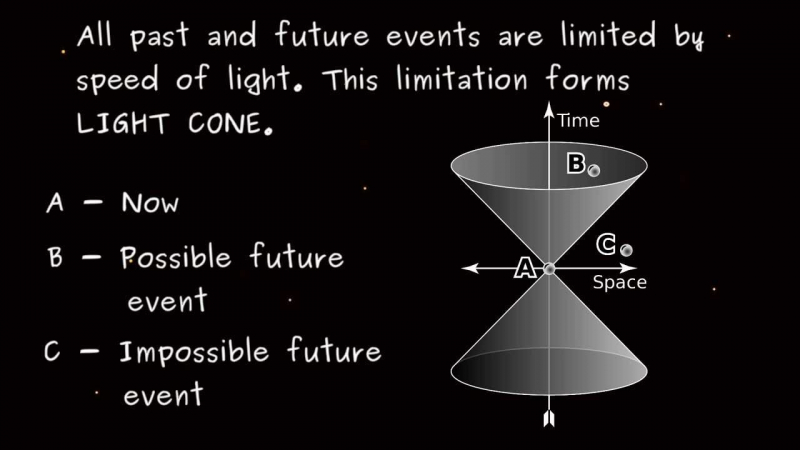
Source: buggedcomputers -
Albert Einstein predicted the equivalence of mass (m) and energy (E) through his famous mass–energy equivalence formula E=mc2, where c is the speed of light in a vacuum, as part of his theory of special relativity. This was crucial because it demonstrated that a particle had an energy called "rest energy" that is separate from its kinetic and potential energies. It suggests that gravity may bend light and thus be used to determine the amount of energy created or consumed during nuclear processes.
The equation's physics is appropriately enigmatic and complicated. For the rest of us, the relevance of Einstein's formula boils down to one thing: the matter around us contains a massive quantity of energy bound inside it. The E on the left-hand side of the equation relates a body's energy in its rest frame to an object's mass multiplied by the speed of light.
Einstein's formula is often misunderstood as allowing mass to be turned into energy. That isn't entirely accurate, and it isn't what Einstein meant when he laid forth his groundbreaking concept. Instead, his equation demonstrates that a change in an object's mass necessitates a change in its energy. That's why the combined weight of nuclear processes' end products is less than that of their parent atoms.
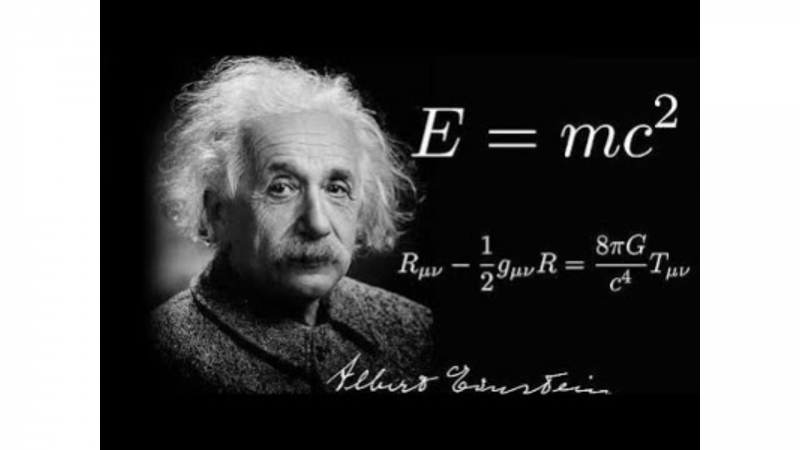
Source: Knappily 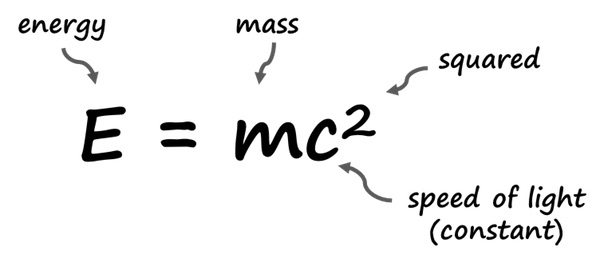
Source: Energy Wave Theory -
In 1916, Einstein published his general theory of relativity, a unified account of gravity as a geometric property of space and time, or spacetime, that generalizes special relativity and Newton's law of universal gravitation. General relativity aided in the modeling of the universe's large-scale structure, and its predictions have been confirmed in all observations and experiments conducted thus far. It has evolved into a crucial tool in modern astronomy, allowing researchers to better comprehend phenomena such as black holes and gravitational lensing. The General theory of relativity is one of the major accomplishments of Albert Einstein.
Einstein noticed that heavy objects generated a distortion in space-time when he worked out the equations for his general theory of relativity. Consider placing a large object in the trampoline's center. The thing would dimple the fabric as it pressed down into it. If you tried to roll a marble around the edge of the trampoline, it would spiral inward toward the body, pulling it in the same manner as a planet's gravity pulls on rocks in space.
When light bends around a large object like a black hole, it acts as a lens for whatever lies behind it. This method is commonly used by astronomers to investigate stars and galaxies that are hidden by huge objects.
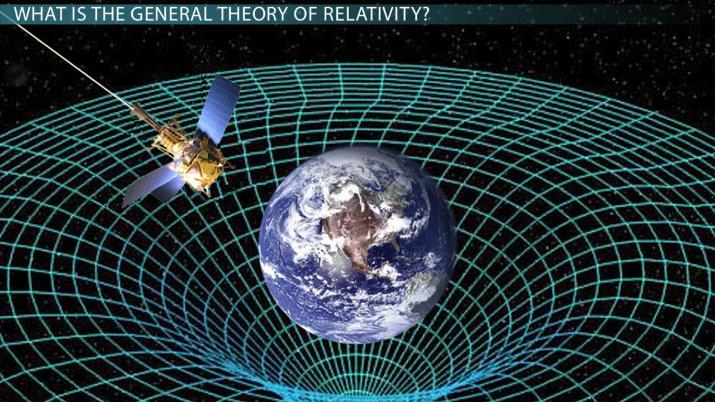
Source: Study.com 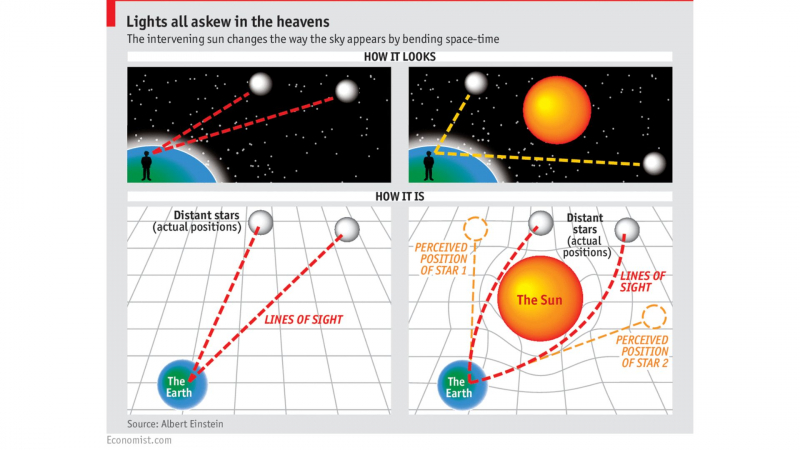
Source: The Economis -
On a near-macroscopic scale, Bose-Einstein condensate (BEC) is a state of matter in which individual atoms or subatomic particles, when cooled to near absolute zero (0 K, 273.15 °C, or 459.67 °F; K = kelvin), coalesce into a single quantum mechanical entity—that is, one that can be described by a wave function.
In 1924, Einstein received a paper on a counting method from the Indian physicist Satyendra Nath Bose, assuming that light might be regarded as a vapor of indistinguishable particles. Einstein's German translation of the text was submitted to a journal. In conjunction with Bose, Einstein extended the concept to atoms, resulting in the prediction of the presence of the Bose–Einstein condensate phenomenon. The first such condensate was not created experimentally until 1995.
Only one month after the JILA experiment, a group led by Randall Hulet at Rice University announced the discovery of a lithium atom condensate. Because of the attractive interactions between lithium atoms, the condensate is unstable and collapses for all but a few atoms. Hulet's team later demonstrated that confinement quantum pressure could stabilize the condensate for up to 1000 atoms. Since then, several isotopes have been condensed.
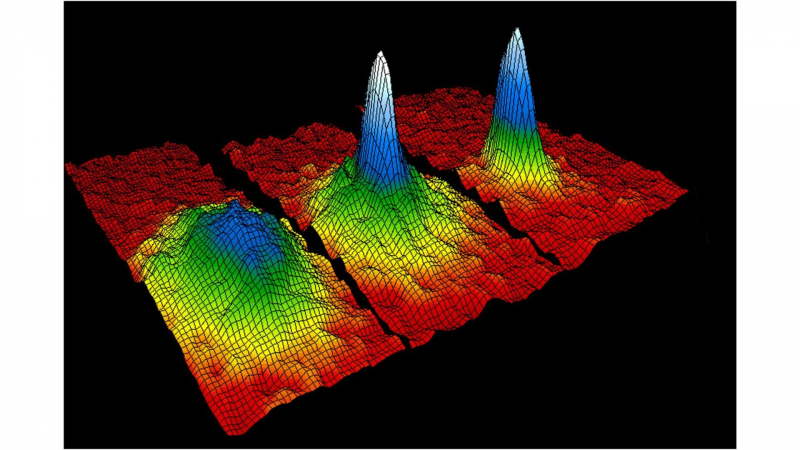
Source: PNAS 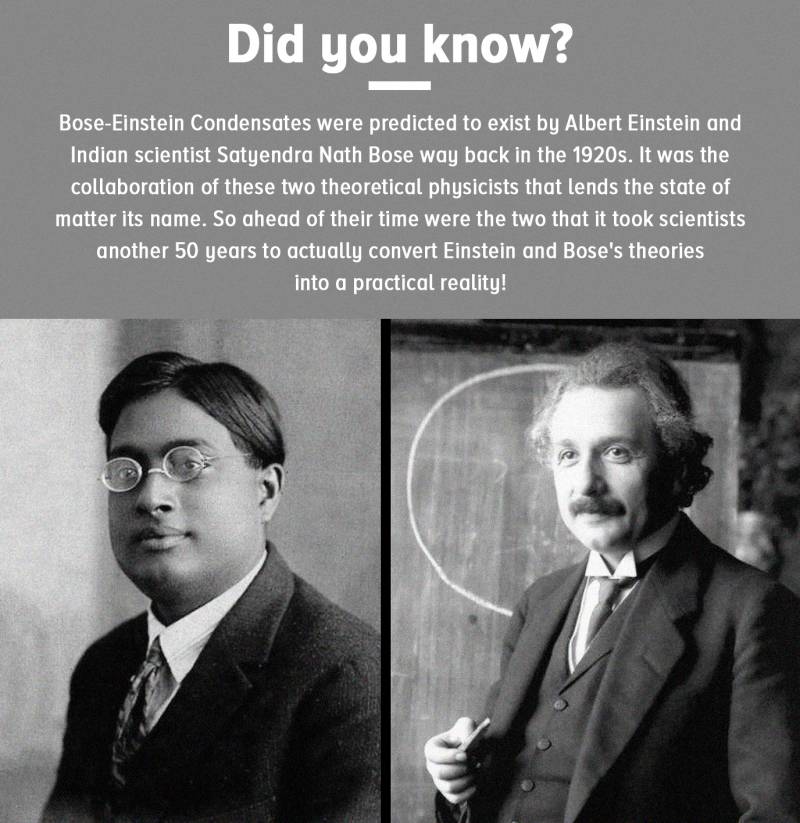
Source: Blog.Byjus -
In a series of public arguments regarding quantum mechanics, Albert Einstein and Niels Bohr were involved. These discussions are remembered because they are significant in science and philosophy. They not only constituted one of the pinnacles of scientific inquiry in the first half of the twentieth century, but they also brought to light an important aspect of quantum theory, namely quantum non-locality, which is critical to our modern understanding of the physical universe.
The majority of Bohr's account of the events in Solvay and elsewhere in 1927 was originally published in an article titled "Discussions with Einstein on Epistemological Problems in Atomic Physics" decades later. The philosophical problem of the discussion, according to the article, was whether Bohr's Copenhagen Interpretation of quantum physics, which was based on his belief in complementarity, was legitimate in understanding nature.
Despite their disagreements and subsequent discoveries that helped strengthen quantum physics, Bohr and Einstein shared a mutual regard that lasted the remainder of their lives. Professional physicists agree that Bohr was victorious in his defense of quantum theory, and that the essential probabilistic character of quantum measurement was definitely proven.
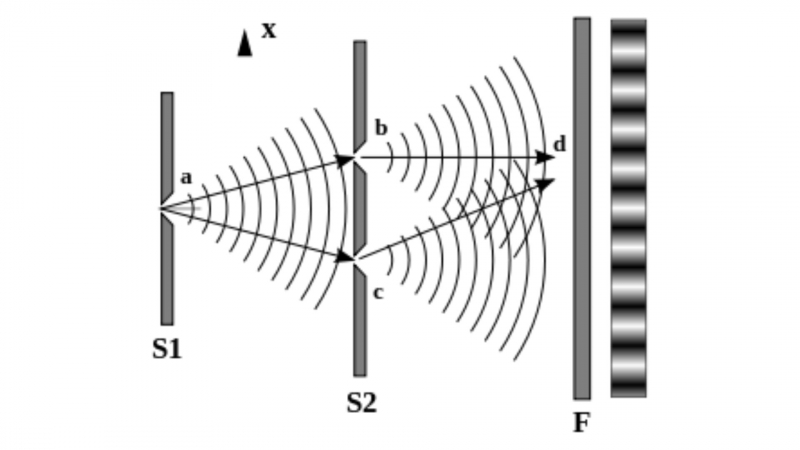
Source: Wikiwand 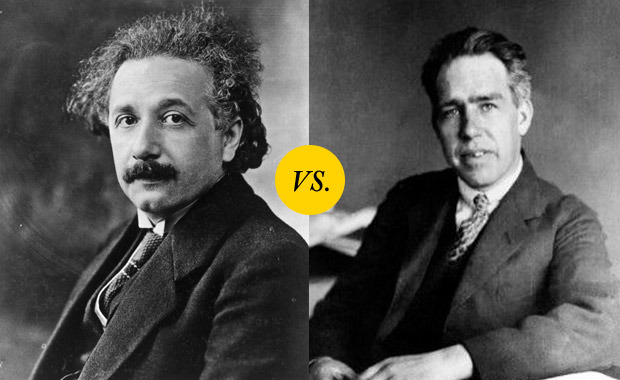
Source: Impose Magazine -
Albert Einstein received the Nobel Prize in Physics in 1921 "for his contributions to theoretical physics, particularly for his discovery of the law of the photoelectric effect." Albert Einstein was awarded the Nobel Prize for Physics a year later, in 1922. The Nobel Committee for Physics judged during the 1921 selection process that none of the year's candidates satisfied the requirements stated in Alfred Nobel's will. The Nobel Prize can be reserved until the next year, according to the Nobel Foundation's laws, and this statute was then enforced. This is one of the major accomplishments of Albert Einstein.
To the astonishment of many, the scientist did not earn the prize for his classic theory of relativity, but rather for the photoelectric effect, which brought researchers to the concept of "photons." Einstein, who was teaching across Japan at the time, did not show up to accept the medal, which added an interesting twist to the story.
The Copley Medal, perhaps the world's oldest surviving scientific prize, was bestowed upon him by the Royal Society in 1925. In addition to the Gold Medal of the Royal Astronomical Society in 1926, the Matteucci Medal in 1921, the Max Planck Medal in 1929, and the Franklin Medal in 1935, Einstein earned numerous more prizes and accolades. Albert Einstein was voted Person of the Century by Time magazine in 1999.
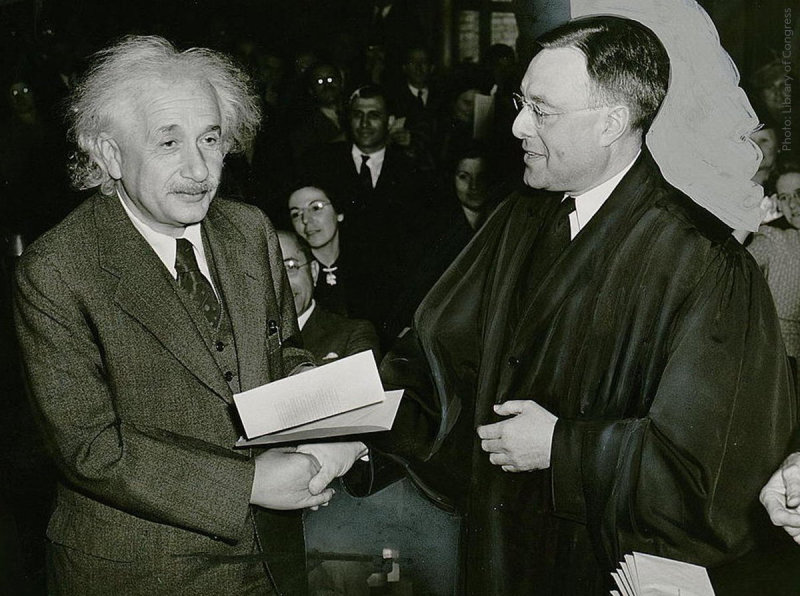
Source: Twitter 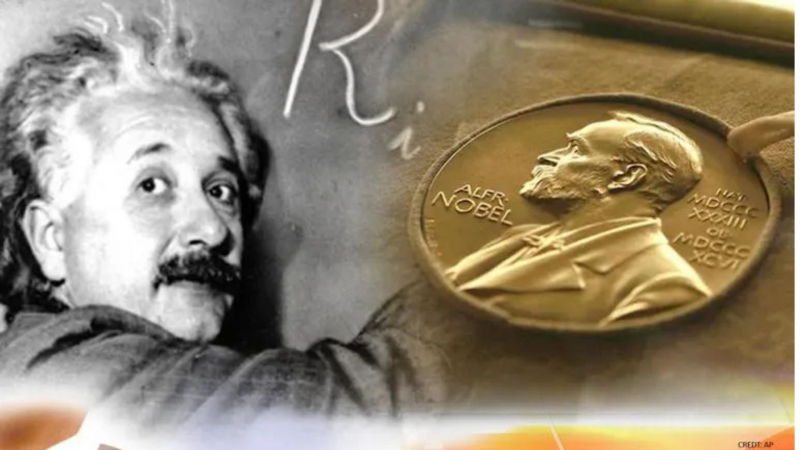
Source: Republic World -
Albert Einstein's scientific theories sped the world's progress like never before, and he provided scientists with the skills to shape nearly every observable facet of life as we know it today. Everything from nuclear energy to GPS satellite synchronization to computers to numerous everyday consumer products may be traced back to Einstein's work. His influence can be evident in subjects like philosophy, the visual arts, and literature, in addition to science.
Logic positivism is a philosophical movement, and art is a movement. Einstein's influence can be seen in Cubism and a slew of science fiction works. Perhaps no one in history has had a greater impact on the world than Albert Einstein.
They came to the conclusion that it could suggest that the neurons had a larger metabolic demand — in other words, Einstein's brain cells required and utilized more energy, which could explain why he had such sophisticated thinking and conceptual abilities. Much of Einstein's later life was dedicated to attempting to unite the disciplines of electromagnetic and gravity. He didn't succeed, although he might have been ahead of his time. This problem is still being worked on by other physicists.
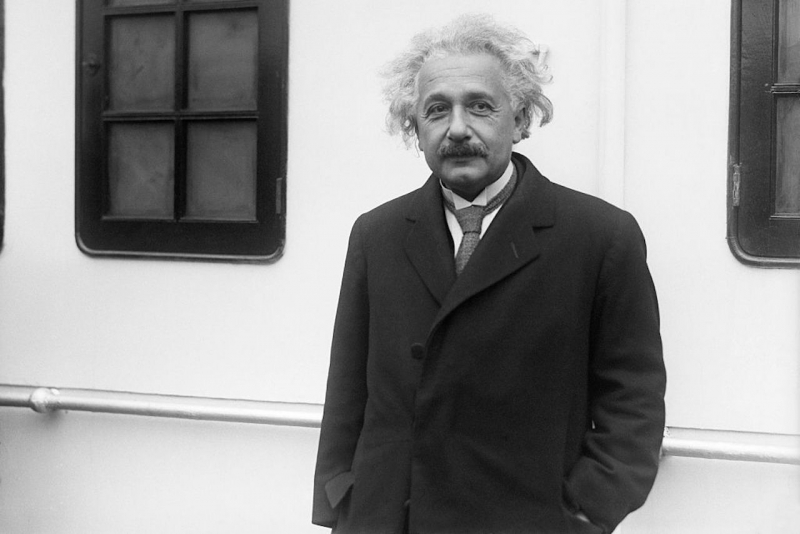
Source: Space 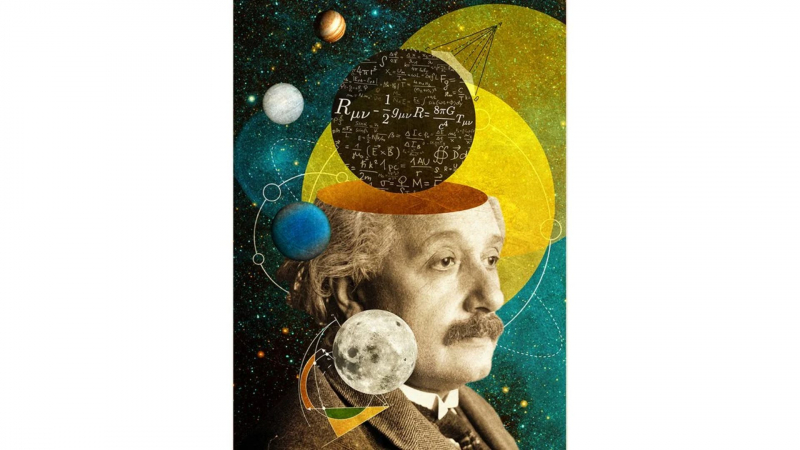
Source: Smithsonian Magazine













